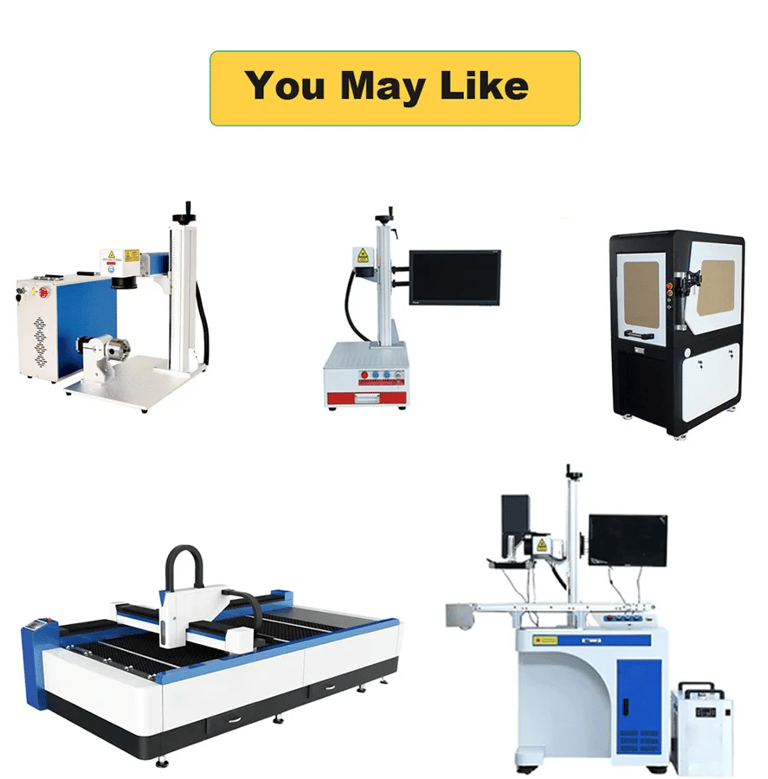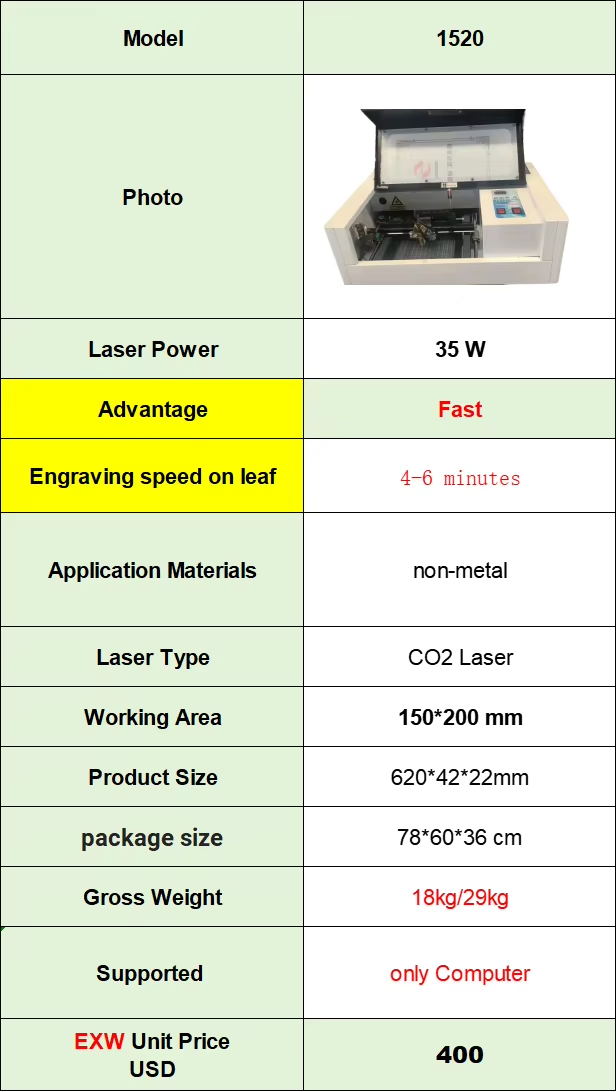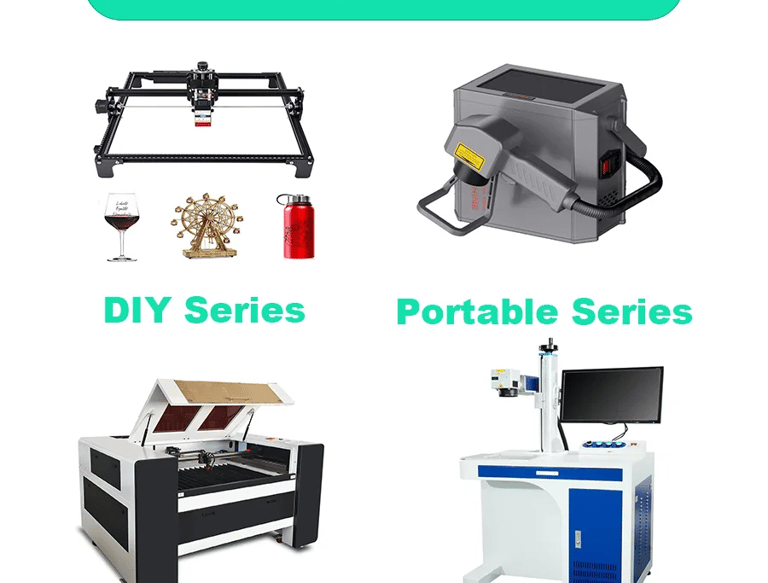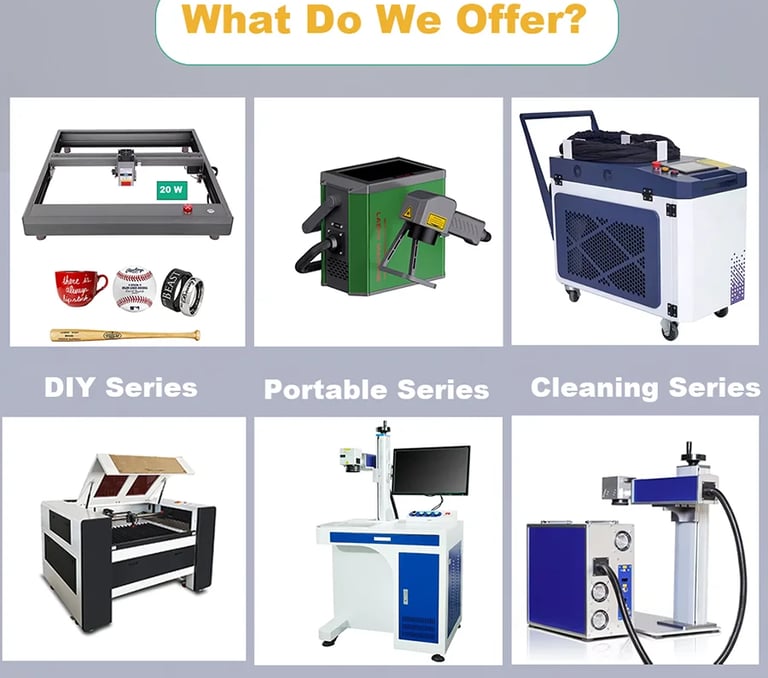Unlocking the Power of CO2 Laser Machines: A Comprehensive Guide to Cutting, Engraving, and Customization
LEON MACHINERY
11/6/202311 min read
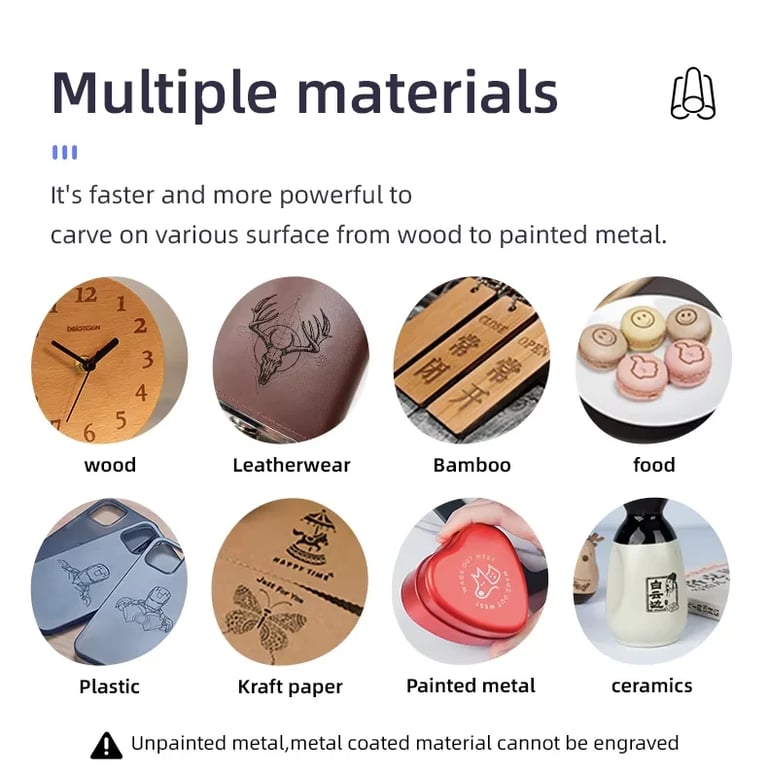

The Evolution of CO2 Laser Machines
CO2 laser machines have transformed the world of manufacturing, design, and personalization. Their precision, speed, and versatility have made them indispensable in industries ranging from fashion to automotive. Since their development in the 1960s, CO2 lasers have undergone tremendous advancements, becoming more powerful, accurate, and affordable. Today, they are used for a variety of applications, including engraving, cutting, and customizing different materials.
In this blog, we’ll delve into the specifics of CO2 laser machines, exploring their different sizes and capabilities, the materials they can work with, and the industries that rely on them. Whether you’re a business owner looking to integrate laser cutting into your workflow or a hobbyist seeking precision in your projects, this guide will help you understand which CO2 laser machine is right for you.
Understanding CO2 Laser Technology
At its core, a CO2 laser is a gas laser that uses carbon dioxide (CO2) as the medium to generate a focused laser beam. The gas mixture typically includes CO2, nitrogen, and helium. When electricity passes through the gas, it excites the molecules, causing them to emit light in the infrared spectrum. This light is then directed into a focused beam that can cut or engrave materials with high precision.
CO2 lasers are favored for their ability to produce a high-quality, concentrated beam of light. The laser’s wavelength is absorbed well by a wide range of materials, making it highly effective in various applications. One of the primary advantages of CO2 lasers is their ability to cut, engrave, and etch both organic and synthetic materials, such as wood, metal, acrylic, plastic, rubber, and fabric.
Small CO2 Lasers: Precision at Your Fingertips
For businesses or hobbyists with smaller production needs, small CO2 lasers (typically 30W-60W) are a perfect choice. These machines offer high precision in a compact size, making them ideal for detailed engraving and light cutting.
With small CO2 lasers, you can work with a variety of non-metallic materials. Common materials include rubber, acrylic, plastic, fabric, leather, felt, and even organic materials like wood. These lasers are commonly used for tasks such as personalizing gifts, creating custom signage, or adding intricate designs to fabric or leather goods.
A 30W to 60W CO2 laser can typically engrave or cut materials with a thickness ranging from 1mm to 10mm, depending on the material. For example, a 30W machine might be able to cut through acrylic up to 6mm thick, while a 60W machine can easily cut through thicker materials like rubber or wood.
Applications of Small CO2 Lasers:
Personalized Gifts: Customizing items like wooden plaques, leather wallets, or acrylic photo frames.
Signage and Branding: Engraving logos, names, or graphics on materials like wood, plastic, or glass.
Textiles and Apparel: Cutting and engraving fabric for clothing, bags, or home decor.
Jewelry Design: Engraving names, logos, or intricate patterns on metal or acrylic jewelry.
Small CO2 lasers are often chosen by small businesses and creators who need a high level of detail and accuracy without requiring massive production volumes. They are affordable and provide excellent value for those entering the world of laser cutting and engraving.
Large CO2 Lasers: Power and Versatility
For more demanding applications, large CO2 lasers (80W-200W) are the go-to machines. These machines are designed to handle larger materials and more intensive tasks, such as cutting thicker or denser materials, creating large-scale engravings, and speeding up production processes.
Large CO2 lasers are capable of cutting materials like wood, acrylic, glass, and rubber with much greater efficiency than their smaller counterparts. With a higher wattage, these machines can cut through thicker materials (up to 20mm or more) and can engrave at faster speeds. The larger working area allows for bigger designs or multiple smaller designs to be processed simultaneously.
Applications of Large CO2 Lasers:
Industrial Manufacturing: Creating intricate parts for machinery, automotive components, and electronic enclosures.
Furniture Design: Cutting large panels of wood or acrylic for custom furniture designs.
Advertising and Signage: Producing large-scale signs, billboards, and promotional materials.
Arts and Crafts: Designing large-scale art pieces or sculptures from various materials.
Large CO2 lasers are used in industries where precision and scalability are essential. They are a natural fit for businesses that need to produce more complex or larger quantities of items, providing efficiency and consistency in high-demand environments.
Extra-Large CO2 Lasers: Unmatched Capacity and Precision
The most powerful CO2 laser machines—ranging from 100W to 260W—are considered extra-large lasers. These machines are used in high-end commercial and industrial applications where extreme precision and capacity are required.
With these heavy-duty lasers, you can cut and engrave extremely thick materials, including dense metals, large sheets of stone, and thick ceramics. The working area of extra-large CO2 lasers can be as large as 130cm by 250cm, making them suitable for industries that require large surface processing.
Applications of Extra-Large CO2 Lasers:
Heavy Manufacturing: Cutting and engraving large metal parts for industrial machinery or automotive production.
Architectural Design: Engraving large-scale models or creating intricate architectural elements from wood, stone, or metal.
Art and Sculpture: Creating detailed, large-scale art pieces or sculptures from wood, stone, or glass.
Signage and Branding: Engraving large outdoor signs, monuments, or statues.
Extra-large CO2 lasers are invaluable in industries where large material handling and cutting are necessary. These machines offer unmatched precision, even when working with challenging materials, and their large working area ensures that they can handle substantial production volumes.
Materials You Can Work With Using CO2 Lasers
One of the biggest advantages of CO2 lasers is their ability to work with a diverse range of materials. Some of the most common materials processed by CO2 lasers include:
Acrylic: Acrylic is one of the most popular materials for laser cutting and engraving. CO2 lasers can cut acrylic with high precision, leaving clean edges that require little post-processing. Engraving acrylic allows for detailed designs on awards, trophies, and signage.
Wood: CO2 lasers can cut and engrave wood with exceptional detail. Whether you’re making custom furniture, intricate art, or personalized gifts, wood is a versatile material that works well with laser technology.
Leather and Fabric: Leather and fabric are ideal materials for laser engraving, as the laser can precisely etch intricate patterns, logos, or text. Whether it’s creating custom bags, belts, or clothing, CO2 lasers offer a clean and professional finish.
Rubber: CO2 lasers are frequently used in the production of rubber stamps. The laser can etch detailed designs or logos into rubber for high-quality, long-lasting stamps.
Glass and Stone: CO2 lasers are capable of engraving glass and stone, making them ideal for creating custom glassware, stone plaques, or decorative items.
Plastics: Plastics such as ABS, PVC, and polycarbonate can be engraved and cut using CO2 lasers. However, some plastics release hazardous fumes when cut, so it’s essential to use a machine with proper ventilation or filtration.
The versatility of CO2 lasers allows them to be used across a wide variety of industries, each with its specific material needs and design requirements.
Cooling Systems: Keeping Your Laser Running Smoothly
One of the most important considerations when using CO2 lasers is the cooling system. There are two main types of cooling systems used in these machines: air-cooled and water-cooled.
Air-Cooled Systems: These systems are typically found in smaller, lower-powered machines. They rely on air to dissipate heat from the laser tube. While air-cooled systems are easier to maintain and cost less, they may not be suitable for larger, high-powered machines due to the higher levels of heat generated.
Water-Cooled Systems: Water-cooled systems are often used in larger machines that generate more heat. These systems use a circulating water pump to cool the laser tube, allowing the machine to operate at higher power levels without overheating. Water-cooled systems are more efficient and offer better heat dissipation, but they require regular maintenance to prevent clogging and ensure proper flow.
When selecting a CO2 laser machine, it’s important to consider the cooling requirements of the system. Water-cooled lasers are generally more efficient and are recommended for larger machines with higher wattage.
Applications Across Industries
CO2 laser machines are used across a wide range of industries, from creative fields like jewelry design to industrial manufacturing. Here are some of the industries where CO2 lasers play a vital role:
Automotive Industry: CO2 lasers are used to cut and engrave automotive parts with precision. They can create intricate designs, cut metal, and engrave VIN numbers or logos on car parts.
Fashion and Textiles: The fashion industry uses CO2 lasers to cut fabric with intricate patterns and designs. Leatherworkers also rely on these lasers to create custom designs on leather goods like wallets, belts, and bags.
Architecture and Design: Architects and designers use CO2 lasers to cut and engrave materials for custom signage, models, and decor. They can produce intricate patterns in wood, acrylic, and metal to create unique architectural elements.
Signage Industry: From custom storefront signs to large-scale billboards, CO2 lasers are essential in the signage industry. These machines can cut through materials like acrylic, wood, and metal to create highly detailed and visually striking signage that attracts attention. Whether for indoor or outdoor signage, the precision and quality of CO2 lasers make them ideal for producing everything from store signs to promotional displays.
Packaging Industry: CO2 lasers are also used in the packaging industry for custom designs on boxes, cartons, and labels. By engraving logos, text, or intricate patterns on packaging materials, businesses can create a strong brand identity. Laser cutting also enables businesses to produce complex shapes and designs for packaging with precision, enhancing both aesthetics and functionality.
Medical Industry: In the medical field, CO2 lasers are used for cutting and engraving materials like medical instruments, implants, and devices. The high precision of CO2 lasers ensures that these critical items are manufactured with the utmost accuracy. The technology is also used in medical device sterilization, engraving identification numbers on surgical tools, and cutting soft tissues in medical procedures.
Consumer Goods and Gifts: CO2 lasers are often employed to personalize consumer products, ranging from customized gifts like engraved jewelry and glassware to promotional products. By etching names, logos, or designs onto these items, businesses can offer unique, personalized products that appeal to consumers. This is especially popular in the gift industry, where personal touches like engraving have become a staple.
Crafting and DIY: For hobbyists and small business owners in the crafting industry, CO2 laser machines have revolutionized the creation of custom DIY projects. Whether it's personalized wedding gifts, home decor, or custom toys, CO2 lasers enable users to cut, engrave, and create intricate designs on a variety of materials such as wood, leather, and acrylic.
Education and Research: Universities and research institutions use CO2 lasers in various scientific experiments and prototypes. The ability to cut and engrave precise designs allows researchers to create models, prototypes, and experimental setups. Laser systems are also used in educational environments for practical learning on the applications of laser technology.
Customization and Personalization Trends
The desire for customized products is growing across multiple sectors. CO2 laser machines are well-positioned to meet the demands of this trend, offering a fast, precise, and cost-effective way to produce personalized items at scale. Customization in various industries is no longer a luxury but a necessity to differentiate brands and cater to consumers' evolving expectations.
Personalized Gifts: One of the most popular applications of CO2 laser technology is the creation of personalized gifts. Whether it's engraving names on a wooden plaque or creating intricate designs on leather wallets, CO2 lasers provide the precision and speed needed to create truly one-of-a-kind items. The gifts market is flourishing, as consumers are increasingly looking for personalized items to celebrate special occasions, from birthdays to weddings and anniversaries.
Corporate Branding: Businesses are also embracing customization through laser technology, using it to create branded products that stand out. Custom engraving of logos or company names on items like pens, keychains, and gifts helps enhance brand identity and create memorable promotional products. This has become a key tool for businesses looking to build stronger connections with customers through personalized marketing.
Custom Apparel and Fashion: Fashion designers are leveraging CO2 lasers to create unique fabric patterns, cutouts, and logos that would be difficult to achieve through traditional methods. For instance, intricate lace-like designs can be laser cut into fabrics, or custom engravings can be added to leather jackets or belts. This level of customization offers endless possibilities for designers to craft exclusive collections.
Customization in Advertising and Marketing: CO2 lasers are increasingly used to create eye-catching, customized advertising materials. Whether it’s personalized promotional items, bespoke business cards, or unique corporate giveaways, laser technology helps businesses deliver a tailored marketing experience. Companies can engrave their messages, logos, and other details with precision, providing a distinct visual impact in any marketing campaign.
Maintenance and Care for CO2 Laser Machines
To ensure optimal performance and longevity, proper maintenance of CO2 laser machines is essential. Routine checks and preventative measures can prevent issues and extend the life of your machine, keeping your operations running smoothly and avoiding costly downtime.
Routine Cleaning: One of the most important maintenance tasks is regular cleaning. The laser lens and mirrors need to be cleaned to prevent any dust or debris from interfering with the laser beam. This will ensure that the machine continues to operate at its peak performance. Most laser systems come with cleaning kits and guidelines, so make sure to follow the manufacturer's recommendations to avoid damaging delicate components.
Check the Laser Tube: Over time, the laser tube will degrade due to usage, which can result in a decrease in power output. It is important to check the tube regularly for signs of wear, such as discoloration or cracks. Depending on the frequency of use, the tube may need to be replaced every 1 to 3 years.
Cooling System Maintenance: As mentioned earlier, keeping the cooling system in good condition is crucial to prevent overheating. Regularly check the water or air cooling system to ensure that it’s functioning properly. For water-cooled systems, inspect the water levels and ensure there are no blockages in the pipes. For air-cooled systems, clean the filters and vents to ensure that airflow is not obstructed.
Software Updates: Many CO2 laser machines come with integrated software that controls the cutting and engraving process. Make sure to keep your software up to date to benefit from new features, improvements, and bug fixes. This will help ensure that your machine operates efficiently and safely.
Replacement Parts: In addition to the laser tube, other parts like the motors, belts, and sensors may also need to be replaced over time. Keep track of the machine's performance and replace worn-out components to maintain optimal performance.
Troubleshooting: When issues arise, it’s important to troubleshoot them promptly to prevent further damage. Common problems include inconsistent cuts, weak engraving, or laser beam misalignment. Most manufacturers offer troubleshooting guides or customer service to assist you in diagnosing and fixing problems.
Why CO2 Lasers Are a Game-Changer
CO2 laser machines have revolutionized manufacturing, design, and personalization across various industries. Their precision, versatility, and ability to work with a wide range of materials have made them indispensable tools for businesses and hobbyists alike. From creating personalized gifts to cutting and engraving intricate designs in industrial production, CO2 lasers provide unmatched flexibility and efficiency.
As industries continue to embrace customization and personalization, CO2 lasers will remain at the forefront of this trend, offering new possibilities for design, production, and creativity. Whether you’re an entrepreneur looking to expand your product offerings, a designer searching for more precise tools, or simply a hobbyist exploring new technologies, CO2 laser machines provide the capabilities to turn your ideas into reality.
By understanding the different types of CO2 laser machines, their capabilities, and how they can be applied across industries, you’ll be better equipped to make informed decisions about which machine is right for you. Proper maintenance and care will ensure that your laser machine continues to operate at its highest capacity, providing you with years of reliable service and a competitive edge in your field.
As CO2 laser technology continues to evolve, the future is bright, with even more innovative applications and advancements on the horizon. Investing in a CO2 laser machine is more than just upgrading your tools; it’s unlocking new creative possibilities and boosting productivity in ways previously unimaginable.
